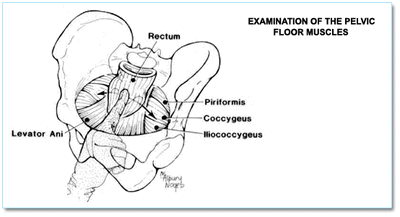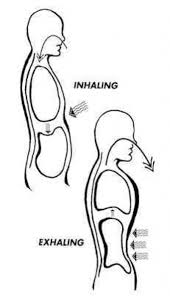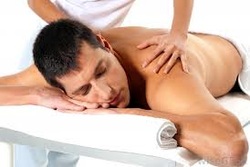 Pelvic Floor Muscles
Pelvic Floor Muscles This picture depicts the complexity of the muscle structure. The muscles as you see them here helps in the dynamic movement of the bone.
When the Pelvis moves it has an upper and lower bowl. As the upper opens the lower closes, this allows for controlled positioning when performing many different movements throughout the day, including breathing. This structure acts as both a support structure and hanging structure, as the lower extremities emanate from here. One of the most notable movement's that takes place here is of course child birth; as the contractions begin the upper portion opens and as the baby moves through the birth canal, the upper portion will start to close and aide in the push for the baby's delivery.
It is the contraction, both shortening and lengthening, of these muscles that also aide in the breathing process. As we inhale they will shorten and pull the lower bowl inward and open up the upper bowl. This will lift the pelvic floor contents and the movement process will in turn strengthen the Pelvic region. As we exhale, the upper bowl will start to close and will ensure a straight pull through the spine and aide in balancing the body.
For the therapist and movement specialist, lets look at the process that needs to be assessed and taken care of. As the Pelvic Floor begins its movement on inhalation the Ischial Tuberosities, or sit bones, draw towards one another as in pelvic abduction. The sacrum moves posterior and inferior which alerts the spine and generates movement in the Scapula region. This is when the balance of tension takes place. So as the four muscles of the pelvic floor shorten, the muscles that control Scapula movement need to elongate. The mid abdominal diaphragm shortens and this allows the muscles that control the breathing kinetics (inhalation: Anterior and Medial Scalenes, External Oblique, Psoas Minor, and Adductor Magnus (pubic attachment) to start their patterned movement. As the Scapulae protract, it turns on the hydraulic pump that moves the CSF and keeps the spine healthy. Conversely, on exhalation the pelvic floor muscles elongate and reverse the process. The muscles for the breathing kinetics on exhalation are the Posterior Scalene, Internal Oblique, Psoas Major, and Adductor Magnus, Ischial Tuberosity attachment. So it is imperative that a true evaluation of the pelvic floor movement is initiated to ensure proper breathing in the body.
The configuration of the ligaments continually adjust to support both movement and posture of not only the Pelvis but the entire structure. That is why in both therapy and Fundamental Movement Pilates(SM) the practitioner will insure that the individual is functional in this area. During movement of the two sides of the Pelvis, the Sacrum or what is commonly referred to as the tail bone, also needs to constantly be adjusted to allow the movement to take place. When we inhale the bottom portion tips inward and reverses that pattern when we exhale. Although there is no gross movement in this structure, there is enough to keep proper spacing and pressure off of the nerves that are in that region.
The home of the infamous Sciatic nerve is housed in the Sacrum or the large bony structure at the base of the spine. Anatomically these nerves form what is called the caudia equina or horse's tail because of its shape. The Sciatic nerve travels through the penetration openings in the Sacrum and the five branches form a large nerve that continues out toward the hip and down the back of the leg.
The ligaments that hold this part of the skeleton together are in a constant state of flux as it helps with breathing, support and posture. One of the major areas of posture is the actual hip joint. The hip joint is an elliptical or slightly oval shaped opening that houses a round ball. This ball needs to be positioned in the true center of the opening to work properly. When this support is compromised we have compression of the joint that causes pain and inflammation. A myriad of other chronic pain issues develop when this joint is in trouble.
The body develops a compensation format when the scenario in the last paragraph takes place, mainly to avoid putting unusual pressure on the Sciatic nerve. This will often present itself as symptoms of low back pain, ankle and/or foot pain, and is often the culprit behind the dreaded Plantar Fasciitis that is often over diagnosed.
When the chronic pain is there, therapy becomes necessary to alleviate the causes. One question often asked me of how to prevent this from happening, and my usual response is to make sure we are breathing fully through our pelvic floor. This will also help with the incontinence problem that is especially prevalent in the female population.
How do I know when I am breathing properly? One of the easiest ways is to notice your jaw joint, this should always stay in a relaxed state with your mouth slightly opened. So, if you notice your jaw tightening up, you are not using your pelvic floor to aide in breathing. This postural gesture seems easy, but throughout the day we clench our jaw continuously through many of our actions. Be aware of it and you will be amazed at the difference it makes.
If you have further questions and/or comments, please feel free to let us know.
and remember there is always A REASON TO HOPE!
Dennis



 RSS Feed
RSS Feed
